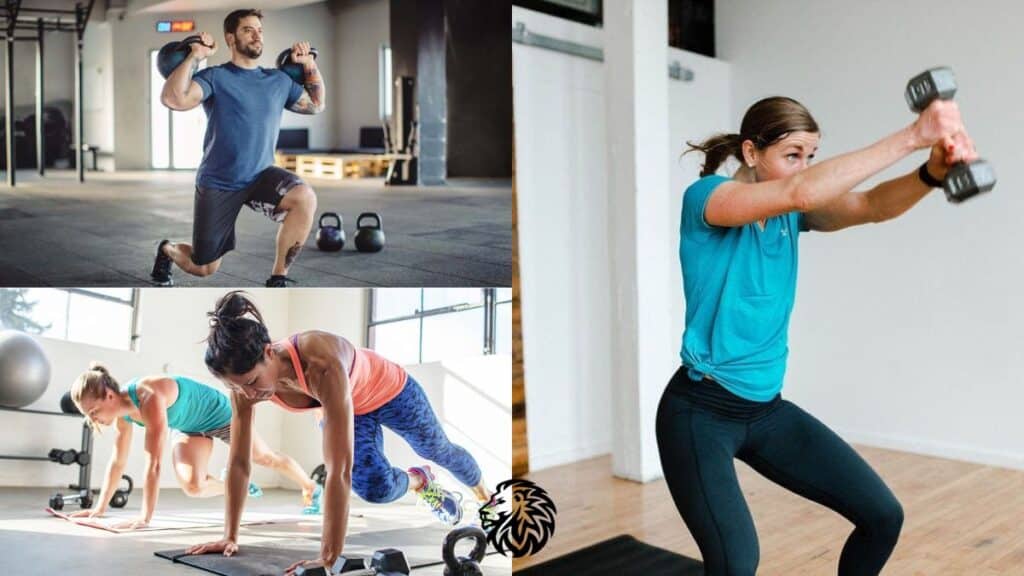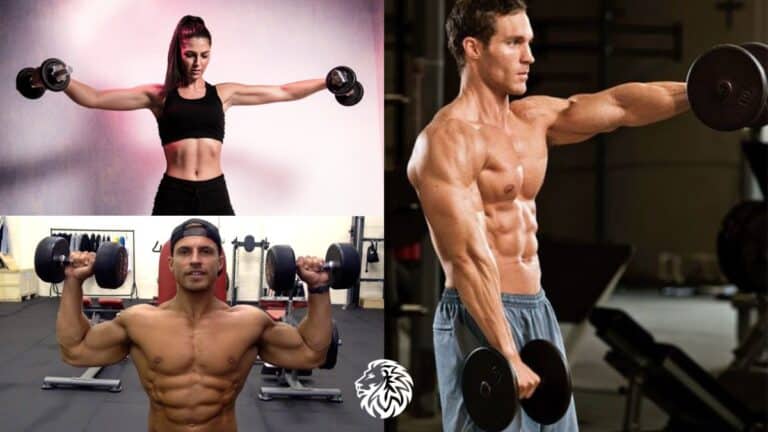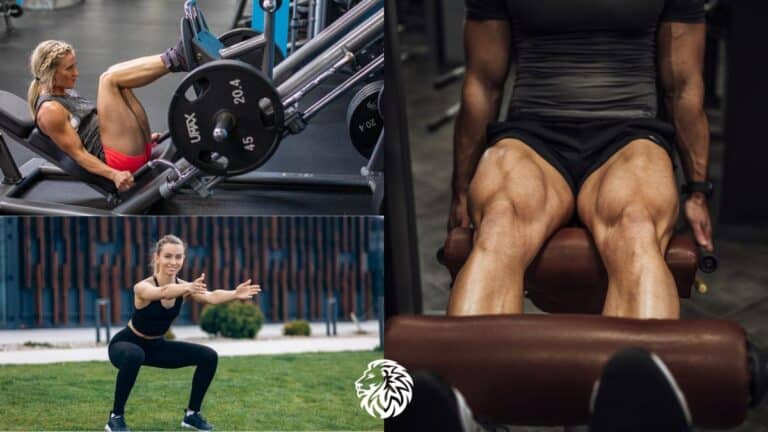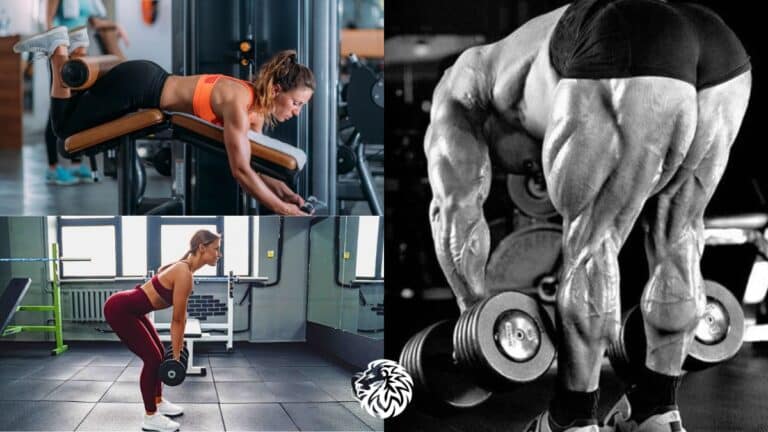In the quest for effective fat loss, cardio exercises such as running, cycling, and swimming are often touted as the golden standard. This widespread belief has led many to focus solely on cardiovascular activities, sometimes overlooking the potential of other forms of exercise for efficient fat burning. However, emerging research and fitness trends are challenging this cardio-centric view.
While cardio is undoubtedly beneficial for heart health and endurance, it’s not the only, nor always the most efficient, pathway to fat loss. This article aims to debunk the myth that cardio is the quintessential fat-burning exercise and introduce readers to a variety of alternative exercises that can be more effective for fat loss. These alternatives, ranging from strength training to high-intensity interval training (HIIT), not only offer variety and excitement in a workout routine but also bring significant benefits in terms of boosting metabolism, increasing muscle mass, and, ultimately, shedding fat more effectively.
As we delve into these alternatives, it’s important to remember that the best exercise for fat loss is one that is sustainable, enjoyable, and suits your body’s unique needs. Let’s explore how you can skip the long cardio sessions and still achieve your fat loss goals with these dynamic and powerful exercises.
Understanding Fat Loss

To effectively address fat loss, it’s essential to understand the basic principles underlying it. Fat loss occurs when the body burns more calories than it consumes. This calorie deficit can be achieved through diet, exercise, or a combination of both. It’s a process regulated by complex metabolic activities, and exercise is a key component in this equation.
Basic Principles of Fat Loss
- Caloric Deficit: The foundation of fat loss is creating a caloric deficit where the body uses more energy than it takes in, leading to the burning of stored fat.
- Metabolism: Your metabolic rate determines how many calories your body burns at rest. Higher metabolism means more calories burned and, consequently, greater potential for fat loss.
- Balance of Macronutrients: The right balance of proteins, fats, and carbohydrates is crucial for effective fat loss. Proper nutrition supports muscle maintenance and overall health during the fat loss process.
The Role of Exercise in Fat Loss
- Increasing Metabolic Rate: Exercise, especially strength training, builds muscle. More muscle mass increases your resting metabolic rate, leading to more calories burned throughout the day, even when not exercising.
- Direct Calorie Burn: Exercises burn calories directly. The intensity and duration of the workout influence the number of calories burned.
- Sustained Fat Burning: Some forms of exercise, particularly high-intensity workouts, can lead to continued fat burning even after the exercise session has ended.
Why Cardio Isn’t the Only Answer
- Diminishing Returns: With traditional steady-state cardio, the body often becomes efficient at the activity, burning fewer calories over time for the same amount of work.
- Muscle Loss: Excessive cardio can lead to muscle loss along with fat loss, which can decrease metabolic rate.
- Variety and Adaptability: Incorporating a variety of exercises, including strength training and HIIT, can prevent workout plateaus and target fat loss more effectively.
- Whole-Body Benefits: Alternatives to cardio often provide additional benefits such as improved strength, better balance and coordination, increased flexibility, and enhanced overall physical health.
In conclusion, while cardio exercises have their place in a well-rounded fitness regime, they are not the sole answer for fat loss. A combination of exercise types, including strength and high-intensity workouts, offers a more comprehensive approach to losing fat effectively and sustainably.
Strength Training for Fat Loss

Strength training, often overshadowed by cardio in the context of fat loss, is actually a powerful tool in your exercise arsenal for shedding fat. This form of exercise involves lifting weights or using resistance to build muscle mass and strength. Understanding its benefits, examples, and how it contributes to fat loss and muscle building is key to integrating it effectively into your fitness routine.
Benefits of Strength Training Over Traditional Cardio
- Increased Muscle Mass: Unlike cardio, strength training builds muscle. More muscle mass translates to a higher resting metabolic rate, meaning you burn more calories even when not exercising.
- Enhanced Fat Burning: Strength training can lead to Excess Post-Exercise Oxygen Consumption (EPOC), where your body continues to burn calories at an elevated rate after the workout is completed.
- Improved Body Composition: Regular strength training alters body composition, leading to a decrease in body fat percentage and an increase in lean muscle mass.
- Greater Strength and Endurance: It not only aids in fat loss but also builds the strength and endurance of muscles, making daily activities easier.
Examples of Strength Training Exercises
- Free Weights: Exercises like bench presses, deadlifts, and squats using barbells or dumbbells.
- Bodyweight Exercises: Movements like push-ups, pull-ups, and planks that use body weight as resistance.
- Resistance Machines: Using gym equipment designed for specific muscle groups, such as leg presses or chest press machines.
- Resistance Bands: Exercises that utilize elastic bands to create resistance, suitable for all fitness levels.
How Strength Training Contributes to Fat Loss and Muscle Building
- Boosting Metabolic Rate: Muscle tissue is metabolically active, requiring more energy (calories) to maintain than fat tissue. This means the more muscle you have, the more calories you burn at rest.
- Calorie Burn During Workouts: While the immediate calorie burn might be lower than a cardio workout, the overall calorie burn can be higher due to EPOC.
- Muscle Preservation: In a calorie deficit, strength training helps preserve muscle mass, ensuring most of the weight lost comes from fat.
- Improved Insulin Sensitivity: Increased muscle mass improves insulin sensitivity, which can help in regulating blood sugar levels and potentially reduce the storage of new fat.
Incorporating strength training into your fat loss regimen can yield significant benefits not just in terms of reducing fat, but also in building a stronger, more toned physique. This dual benefit makes it an essential component of a well-rounded fitness program.
High-Intensity Interval Training (HIIT)

High-Intensity Interval Training, commonly known as HIIT, is a training technique that involves quick, intense bursts of exercise followed by short, sometimes active, recovery periods. This type of training gets and keeps your heart rate up, burning more fat in less time.
Explanation of HIIT and Its Benefits
- Structure: A typical HIIT workout alternates between high-intensity exercises (like sprinting or intense plyometric movements) and rest or low-intensity periods.
- Time-Efficient: HIIT workouts are usually short, often lasting 30 minutes or less, making them ideal for those with busy schedules.
- Calorie Burning: HIIT can burn a lot of calories in a short amount of time and continues to burn calories after the workout through EPOC (Excess Post-Exercise Oxygen Consumption).
- Improves Cardiovascular and Metabolic Health: HIIT has been shown to improve heart health, insulin sensitivity, and cholesterol levels.
- Adaptability: It can be tailored to various fitness levels and can be performed with or without equipment.
Sample HIIT Routines
- Bodyweight HIIT:
- 30 seconds of burpees, 30 seconds rest.
- 30 seconds of jump squats, 30 seconds rest.
- Repeat for 15-20 minutes.
- Treadmill HIIT:
- 1 minute of high-intensity sprinting, 1 minute of walking.
- Repeat for 20 minutes.
- Cycling HIIT:
- 2 minutes of intense cycling, 1 minute of leisurely cycling.
- Repeat for 30 minutes.
Comparing HIIT with Steady-State Cardio
- Time Efficiency: HIIT is much more time-efficient than steady-state cardio. You can achieve similar or even superior results in a fraction of the time.
- Metabolic Rate: HIIT elevates your metabolic rate for hours after the exercise, which means you continue to burn calories long after the workout is finished.
- Muscle Building: Unlike steady-state cardio, HIIT can help in building muscle, especially in the lower body and core.
- Endurance: While steady-state cardio improves cardiovascular endurance, HIIT can also increase endurance but in a shorter time frame.
- Versatility: HIIT workouts can be constantly varied, preventing boredom and plateau, which is a common issue with long-duration steady-state cardio.
In summary, HIIT is an efficient, effective, and versatile exercise method for fat loss and overall fitness improvement, offering benefits that differ and, in some cases, surpass those of steady-state cardio.
Functional Fitness Exercises

Functional fitness exercises are designed to train your muscles to work together and prepare them for daily tasks by simulating common movements you might do at home, at work, or in sports. These exercises often involve the use of multiple muscles and joints simultaneously.
Definition and Benefits of Functional Fitness
- Emphasis on Movement Patterns: Unlike traditional weightlifting that often isolates one muscle group, functional fitness focuses on natural movement patterns like pushing, pulling, squatting, and lifting.
- Benefits for Daily Activities: This training improves balance, agility, and muscle strength, making daily activities easier and reducing the risk of injury.
- Whole-Body Workout: Functional exercises tend to use multiple muscle groups at once, providing a comprehensive workout that can improve overall strength and stability.
- Improves Core Stability: Many functional exercises engage the core muscles, crucial for balance and stability.
- Adaptability: Functional fitness exercises can be adapted to any fitness level and are often used in rehabilitation programs.
Examples of Functional Exercises That Aid in Fat Loss
- Squats: Mimics the movement of sitting and standing; works the glutes, quads, and core.
- Lunges: Replicates walking or running strides, targeting the legs and glutes.
- Deadlifts: Simulates lifting objects from the ground, working the back, legs, and core.
- Push-Ups: Engages the chest, shoulders, triceps, and core, reflecting pushing movements.
- Planks: Strengthens the entire core, relevant to any movement requiring core stability.
- Kettlebell Swings: Combines a squatting motion with a dynamic arm swing, engaging the legs, back, and shoulders.
- Medicine Ball Slams: Involves lifting and throwing down a weight, a full-body movement that enhances power and endurance.
By incorporating functional fitness exercises into your routine, you not only aid in fat loss through increased muscle activation and calorie burning but also enhance your ability to perform everyday activities with ease. This practical approach to fitness ensures that the strength and endurance gained in the gym translate effectively into real-world activities.
Compound Movements

Compound movements are exercises that engage two or more different joints to utilize multiple muscles or muscle groups at the same time. These exercises offer a highly efficient way to train, as they work several muscle groups simultaneously, leading to greater calorie burn and muscle building.
Explanation of Compound Movements and Their Efficiency
- Multi-Joint Engagement: Unlike isolation exercises that target one muscle group (like bicep curls), compound movements work multiple groups (like a squat working the hips, knees, and ankles).
- Greater Efficiency: Since they work multiple muscles at once, compound movements can reduce workout time while still providing a full-body workout.
- Increased Calorie Burn: Engaging more muscles requires more energy, leading to a higher calorie burn both during and after the workout.
- Functional Strength: These movements mimic everyday actions, improving functional strength and reducing the risk of injuries in daily life.
- Better Hormonal Response: Compound exercises have been shown to produce higher increases in anabolic hormones like testosterone and growth hormone, aiding in muscle growth and fat loss.
List of Effective Compound Exercises for Fat Burning
- Squats: A fundamental movement that works the quads, hamstrings, glutes, lower back, and core.
- Deadlifts: Targets the back, glutes, hamstrings, and core, and also engages the shoulders and traps.
- Bench Press: Primarily works the chest, triceps, and shoulders.
- Pull-Ups/Chin-Ups: Engage the back, shoulders, and arms.
- Push-Ups: Work the chest, shoulders, triceps, and core muscles.
- Dips: Target the chest, shoulders, and triceps.
- Lunges: Involve the glutes, quads, and hamstrings, with a secondary focus on the core.
- Overhead Press: Strengthens the shoulders, upper back, and arms while engaging the core for stability.
- Rowing Movements: Such as bent-over rows, which work the back, biceps, and shoulders.
- Clean and Press: A dynamic movement engaging legs, core, shoulders, and arms, popular in Olympic weightlifting and CrossFit.
By incorporating compound movements into your fitness routine, you not only improve your muscle strength and endurance but also enhance your body’s fat-burning capability. This comprehensive approach to exercise is time-efficient and highly effective for those looking to lose fat and gain strength simultaneously.
Nutrition and Fat Loss

Nutrition is a critical component in the journey of fat loss. What and how you eat can significantly impact your ability to lose fat effectively. Understanding the interplay between diet and exercise is key to achieving optimal results.
Overview of Nutrition’s Role in Fat Loss
- Caloric Deficit: For fat loss, you must consume fewer calories than your body burns. Nutrition helps manage caloric intake.
- Macronutrient Balance: Balancing proteins, carbohydrates, and fats is crucial for sustaining energy levels, muscle recovery, and overall health.
- Metabolic Function: Proper nutrition ensures that your metabolism functions optimally, aiding in more efficient fat burning.
- Appetite Control: A balanced diet can help regulate hunger and prevent overeating by providing essential nutrients and maintaining stable blood sugar levels.
Tips on Combining Diet with Exercise for Optimal Results
- Sync Nutrition with Workout Intensity: On days with more intense workouts, you might need more carbohydrates for energy. Conversely, on rest or light workout days, you might lower your carb intake.
- Protein Intake: Increase protein consumption to help build and repair muscle tissues, especially after strength training sessions.
- Stay Hydrated: Adequate water intake is essential for metabolism and helps reduce hunger.
- Timing of Meals: Consider the timing of your meals in relation to your workout. Eating a balanced meal a few hours before exercising can provide energy, and a meal or snack after working out can aid in recovery.
- Quality of Food: Focus on whole, nutrient-dense foods and minimize processed foods and sugars. This approach ensures you get more nutrients per calorie, which is crucial in a calorie-restricted diet.
- Consistency Over Perfection: Aim for consistency in your diet rather than perfection. Occasional indulgences are part of a sustainable, long-term approach to nutrition and fat loss.
- Mindful Eating: Pay attention to hunger and fullness cues and avoid emotional or stress-eating.
Remember, there’s no one-size-fits-all approach to nutrition and fat loss. It’s about finding the right balance that works for your body, lifestyle, and fitness goals. Consulting with a nutritionist or dietitian can provide personalized guidance tailored to your specific needs.
Safety Tips and Injury Prevention

Safety is paramount in any exercise regimen. Proper form and technique are not just about getting the most benefit from your workouts; they’re crucial for preventing injuries. Here’s how to ensure safety while incorporating various exercises into your fitness routine.
Importance of Proper Form and Technique
- Prevents Injury: Proper form helps avoid undue stress on joints, ligaments, and muscles, reducing the risk of strains, sprains, and other injuries.
- Increases Effectiveness: Correct technique ensures that the targeted muscles are effectively engaged, leading to better workout results.
- Promotes Long-Term Health: Consistently using good form can prevent chronic injuries and issues that might arise from repeated misuse or overuse of body parts.
How to Safely Incorporate These Exercises into a Fitness Routine
- Start with a Warm-Up: Begin each workout session with a warm-up to prepare your muscles and joints for exercise. This can include light cardio and dynamic stretching.
- Learn Proper Form: Before starting a new exercise, learn the correct form. This might involve seeking guidance from a fitness professional, especially for complex movements like deadlifts or squats.
- Use Appropriate Weight: Start with lighter weights to master the form before progressing to heavier weights.
- Listen to Your Body: Pay attention to your body’s signals. If you feel pain (not to be confused with normal muscle fatigue), stop the exercise to prevent injury.
- Progress Gradually: Increase the intensity, duration, and complexity of your workouts gradually to give your body time to adapt.
- Incorporate Rest and Recovery: Allow adequate rest days for muscle recovery. Overtraining can lead to injuries and burnout.
- Stay Hydrated and Nourished: Proper hydration and nutrition support muscle recovery and overall physical health, which can prevent injuries.
- Cross-Train: Mix different types of workouts to balance your overall fitness and reduce the risk of overuse injuries.
- Cool Down and Stretch: End each workout with a cool-down phase and stretching to reduce muscle stiffness and soreness.
By following these safety tips and being mindful of injury prevention, you can enjoy a more effective and sustainable fitness journey. Remember, the goal is not only to improve fitness and lose fat but also to maintain overall health and wellness.
Conclusion
In our journey through the realm of effective fat loss exercises, we’ve uncovered that there’s more to it than just endless hours of cardio. By embracing a variety of exercise forms, we not only keep our workouts interesting but also tap into different aspects of fitness that contribute significantly to fat loss.
Recap of Key Points
- Diverse Approaches to Exercise: Strength training, HIIT, functional fitness, and compound movements each play a unique role in fat loss, offering benefits that go beyond what traditional cardio offers.
- Strength Training: Essential for building muscle, increasing metabolic rate, and ultimately burning more calories.
- HIIT: Offers a time-efficient way to burn calories, boost metabolism, and improve cardiovascular health.
- Functional Fitness: Enhances everyday movements and activities, contributing to overall strength and stability while aiding in fat loss.
- Compound Movements: Maximize workout efficiency by engaging multiple muscle groups, leading to increased calorie burn and muscle development.
- Nutrition’s Role: A balanced diet is crucial in supporting your exercise regimen and ensuring sustainable fat loss.
- Safety and Injury Prevention: Emphasizing the importance of proper form, gradual progression, and listening to your body to prevent injuries.
As you embark on or continue your fitness journey, remember that the most effective workout plan is one that is well-rounded, sustainable, and enjoyable. Experimenting with these various forms of exercise can not only enhance your fat loss efforts but also contribute to your overall health and fitness. So, step out of the cardio corner and explore the dynamic world of strength, HIIT, functional movements, and compound exercises. With consistency, dedication, and a balanced approach to diet and exercise, achieving your fat loss goals is not just a possibility but an impending reality. Let this be your encouragement to try new methods and find what works best for you in your quest for a healthier, fitter you.







